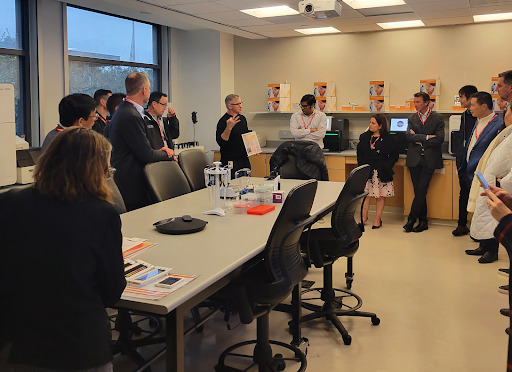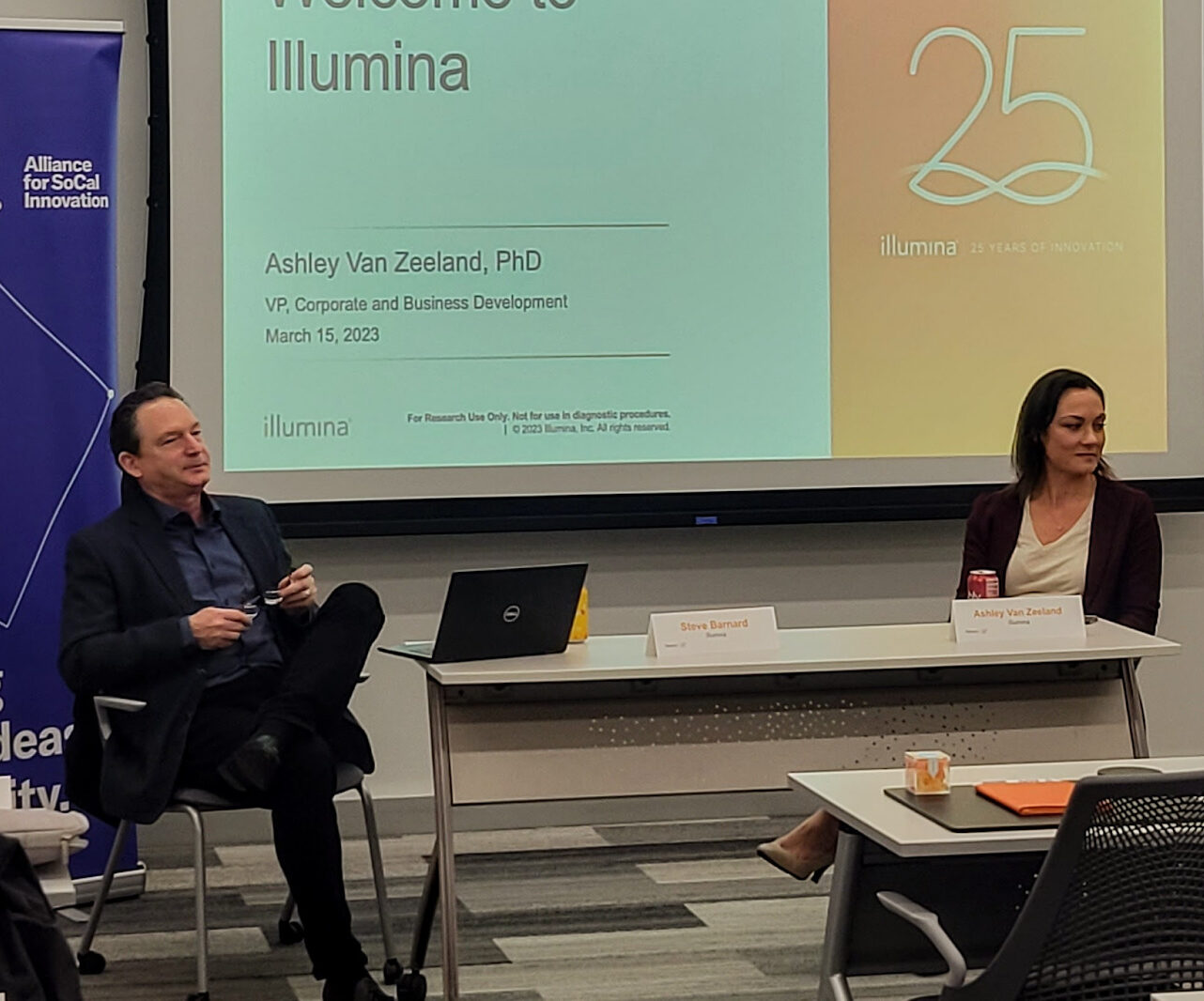Illumina: A Case Study in Innovation Leadership

One of the core communities of practice we have assembled at the Alliance is our corporate innovation leaders. We are fortunate to have almost two dozen leading innovation-driven firms including Kaiser in healthcare, Amgen in biotech, Edison in energy, and Walt Disney in entertainment – truly spanning the diverse industries that define the massive $1.4Tn SoCal economy (the 15th largest in the world just behind Australia and just ahead of Mexico). Though you might think this diversity might make collaboration difficult, it has been quite the contrary. These leaders are already experts within their own industries but thirst to understand best practices from others in hopes of identifying novel thinking they can bring back home. Furthermore, the diversity of industries alleviate competitive anxiety while facilitating more open idea exchange.
This year we have launched a series of innovation site tours combined with leadership roundtable discussions. Our first one took place last week at the world leader in genomics, San Diego-based Illumina, the genomics engine behind services like 23andme and Ancestry. Though the weather refused to cooperate, we were pleased to bring together 20 prominent SoCal innovation leaders to visit Illumina’s amazing campus.

The site tour was truly fascinating. Illumina’s products focus on improving human health by unlocking the power of the genome and sit at the intersection of microfluidics, optics, computing, and automation. We learned about the evolution of their business, growing from a small genotyping startup to becoming the world’s leader in genomics sequencing. As real-time evidence for the critical importance of genomics sequencing, the success of the Covid mRNA vaccines was integrally linked to the ability to genetically sequence selected pathogen proteins.
Furthermore, Illumina’s technology increases the speed of discovery by a staggering extent. As an example, the Human Genome Project took 13 years and cost $2.7Bn, but Illumina’s latest sequencers can do the same in a half day for $200. Such progress opens the door to personalized medicine and proactive treatment for diseases before they manifest.

While the incredible science was certainly impressive, the discussion that followed the tour was focused on Illumina’s well developed innovation practices that ensure they maintain industry-leading products in a dynamic marketplace.
We were fortunate to have two of Illumina’s top innovation leaders set the stage for what became a highly interactive discussion. Steve Barnard, Vice President and Global Head of Advanced Sciences (also employee #4 at the company) and Ashley Van Zeeland, Head of Corporate and Business Development, shared key methods in managing their innovation pipeline. They introduced the concept of TMI (“Technology Maturity Index”) which is very similar to TRL or the “Technology Readiness Level” used as a phase gate mechanism for technology developments.
One guest inquired about how market size or market readiness was considered in prioritizing efforts. There was a great conversation about how many active projects are enough and when they are too many. As you might imagine, Illumina conducts a continual winnowing down as various projects fail to hurdle the next gate (with the constraining resource being both budget and personnel). The group explored how to balance which efforts were critical to the core and should be done in-house, versus those that were supporting capabilities and lent themselves to partnerships and third party collaborations. In Illumina’s case, they cited microfluidics as being core, and optics/sensing as being best done through partnerships.
The group acknowledged the critical role of academic research for helping identify next generation breakthroughs that were beyond the shorter commercial planning horizons. This led to an active discussion about the need for skilled personnel to support diverse and growing innovation efforts in the region. We heard from leaders at UCSD and SDSU about their commitment to feeding the talent pipeline but also the need to better understand industry needs to further optimize career pathways. Steve Barnard, reflecting on the radical improvements in the local innovation ecosystem over the last 25 years since he arrived in San Diego from Boston to help launch Illumina, said “the workforce has developed significantly and top researchers now enthusiastically come to San Diego for compelling career opportunities.” He also commented that the region is now developing its own seasoned talent that can lead new innovation enterprises and stated that many Illumina alums have launched new ventures on their own. Ashley also described the Illumina Accelerators and how they leverage that capability to develop additional novel applications and grow demand for their sequencers.

The energetic discussion continued over lunch, generously sponsored by Dell Technologies, before we faced the elements to return to our respective home bases. The day was definitely a shining moment for SoCal: both demonstrating first hand the extraordinary capabilities of local innovation enterprises like Illumina, and also bringing together so many insightful leaders who share a commitment to thoughtful collaboration.
If you are a top SoCal innovation leader and care to join us for our next innovation tour and leadership roundtable discussion at Edwards LifeSciences on April 13th, please contact Katie to request an invitation (katie at alliancesocal.org).